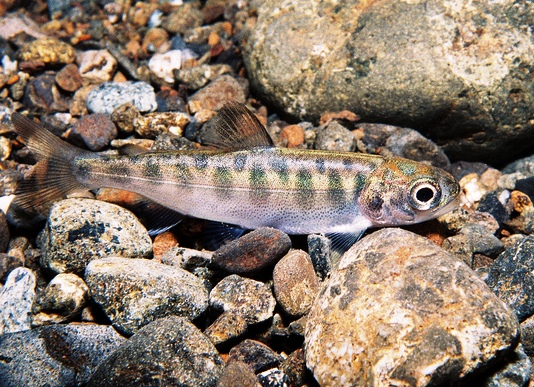Podcast: Play in new window
BOB HIRSHON (host):

Autobiographical fish bones. I’m Bob Hirshon and this is Science Update.
The earbone, or otolith, of a fish, is a disk that grows outward, leaving rings like those in the cross-section of a tree-trunk. Ecologist Sean Brennan and his colleagues report in the journal Science Advances, that otoliths from salmon can reveal details of the fishes’ past.
SEAN BRENNAN (University of Washington; formerly at University of Alaska, Fairbanks)
So the stuff that’s in river water is routed into the blood of the fish and then deposited onto the surface of the otolith. And since that’s occurring over the fish’s life, you essentially have a chemical record.
HIRSHON:
That record can be matched to the chemicals found in different streams. Brennan says that lets scientists see where each salmon was born, what streams produce the most fish, where they live and grow, and how long salmon remain in streams vs. the ocean: information invaluable to efforts to preserve them. I’m Bob Hirshon, for AAAS, the science society.

